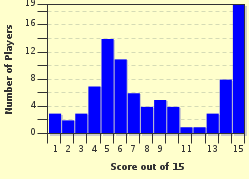Quiz Answer Key and Fun Facts
1. "Hete" means "hot" and "bliksem" means "lightning" but what kind of Dutch dish is "hete bliksem"?
2. What Dutch snack is similar to Dutch "kroketten" ("Croquettes") but round in shape?
3. Some Dutch dishes have interesting names such as "blote billetjes in het gras" ("bare buttocks in the grass") but what is it?
4. A very popular Dutch snack food is a "frikandel" but what is it made from?
5. What Dutch dessert is named for the inhabitants of a Dutch city who always seem to have an air about them?
6. From what animal comes the "Hollandse Nieuwe" ("Holland's New")?
7. What Dutch snack has been incorporated into the local McDonalds menu?
8. What delicious Dutch flan originated from the southernmost Dutch province?
9. What treat do the Dutch make for New Years Eve?
10. What delicious pancake-like treats are often served in Dutch restaurants?
11. On a cold winter afternoon the Dutch would enjoy "Snert" but what is it?
12. What sweet Dutch delicacy's name is a word play on the name of a Dutch cartoon character as well as the French equivalent of a well-known fairy tale character?
13. What Dutch dish shares its name with the Dutch word for a "bouncer"?
14. What do the Dutch do with the delicacy that they call "zult"?
15. What dish did the Dutch adopt as their own from the period that Indonesia was a Dutch colony?
Source: Author
Shaffyre
This quiz was reviewed by FunTrivia editor
ozzz2002 before going online.
Any errors found in FunTrivia content are routinely corrected through our feedback system.


